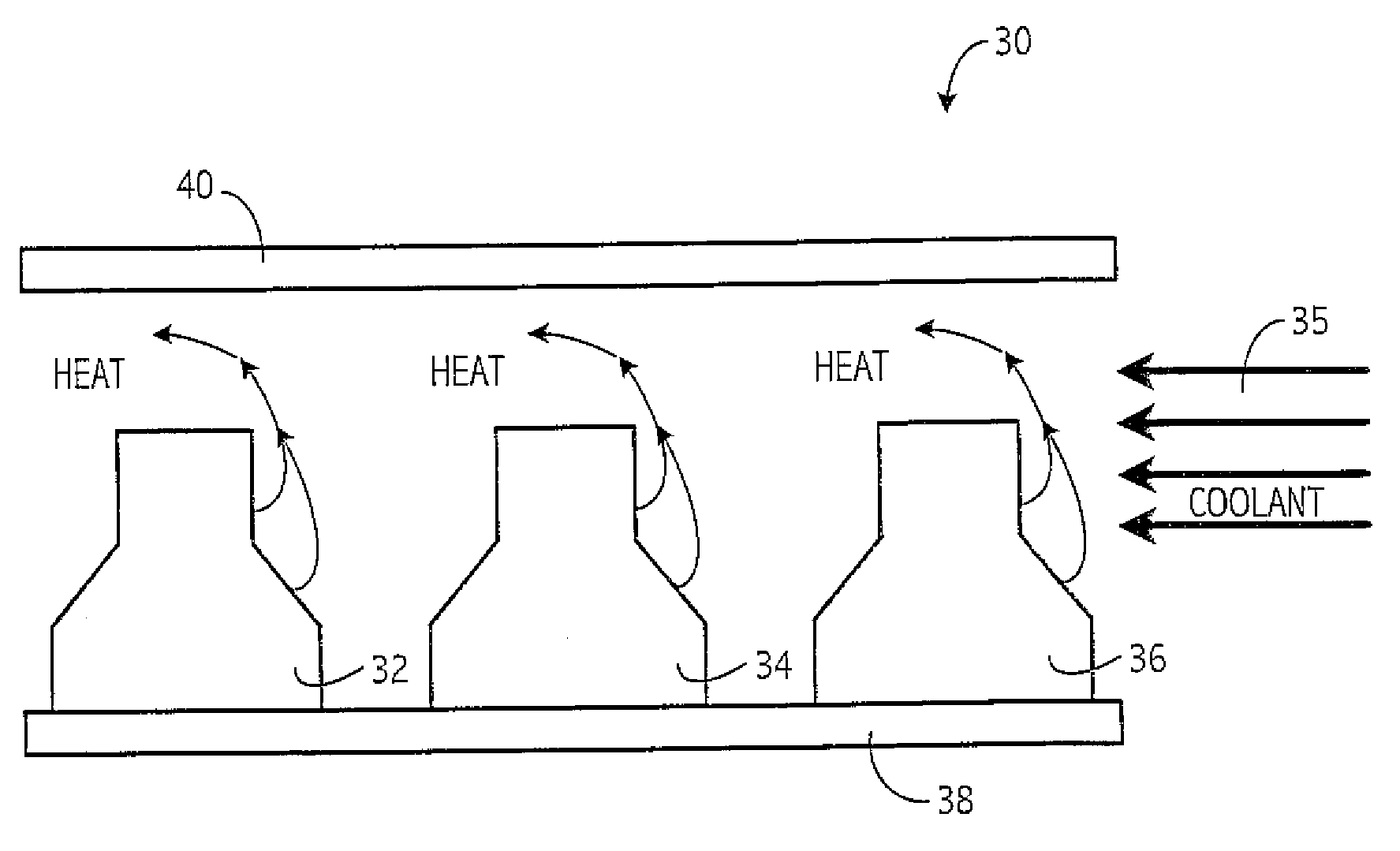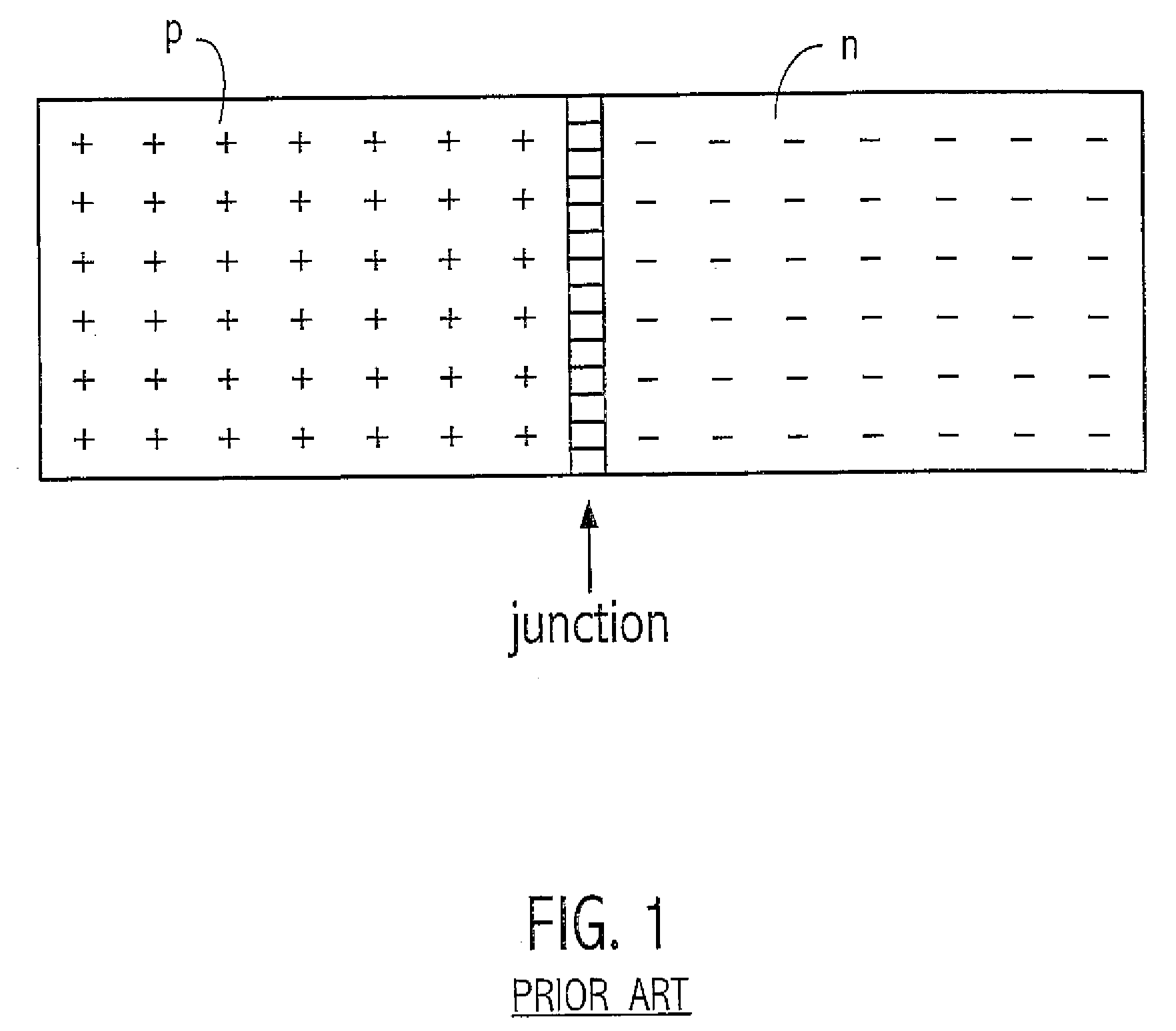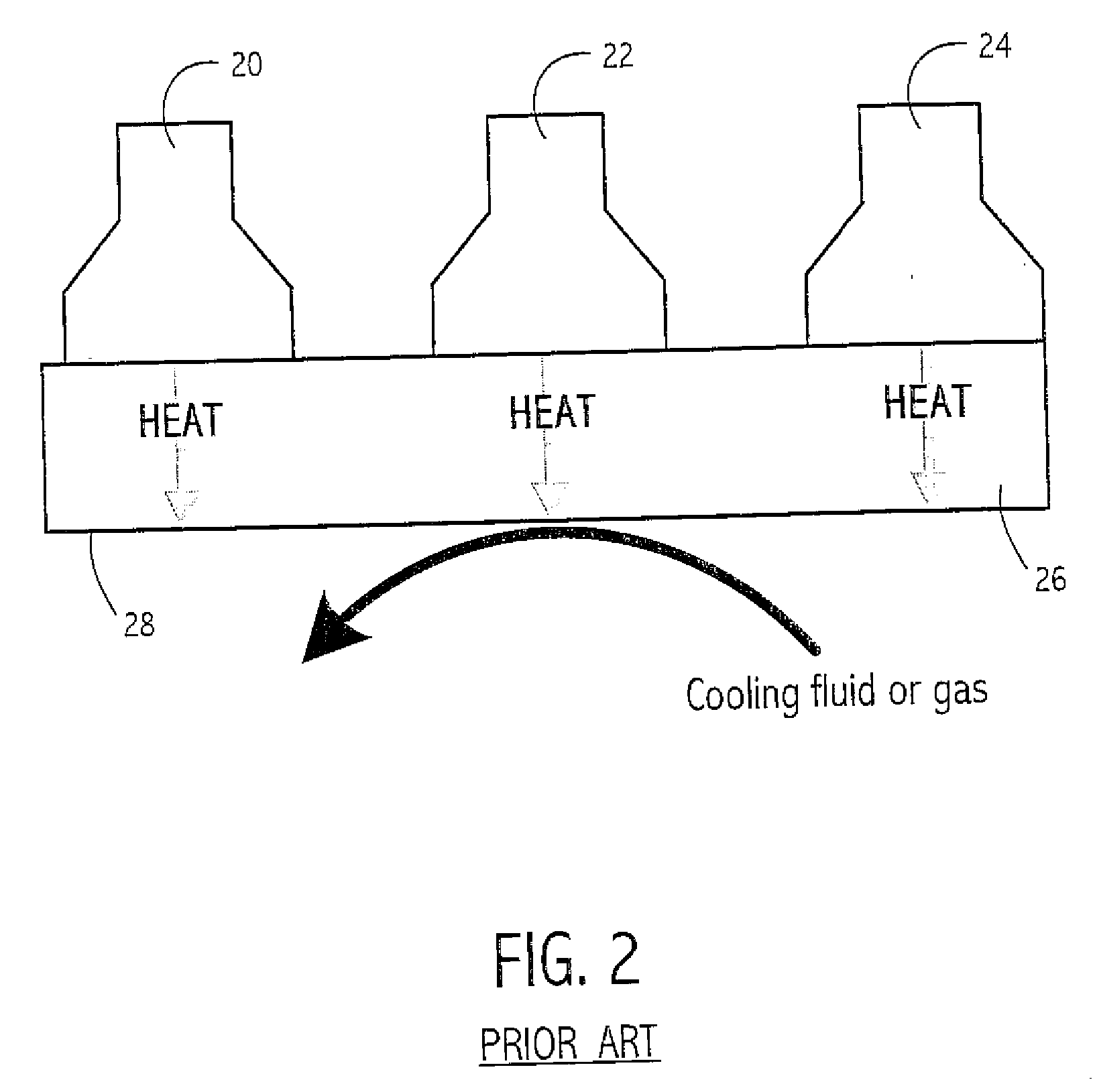Direct cooling of leds
a technology of leds and leds, applied in the direction of semiconductor devices for light sources, point-like light sources, lighting and heating apparatus, etc., can solve the problem of relative increase in optical flux, and achieve the effect of efficient removal of hea
- Summary
- Abstract
- Description
- Claims
- Application Information
AI Technical Summary
Benefits of technology
Problems solved by technology
Method used
Image
Examples
Embodiment Construction
[0037] Representative embodiments of the present invention are shown in FIGS. 4-13, wherein similar features share common reference numerals.
[0038]FIGS. 4-12 show examples of a semiconductor device such as a high-density LED array that may be used for applications requiring high optical power density at the working surface of a target material. In such applications, the target material is exposed with light for the purpose of illuminating or performing a material transformation in or of the target. Such applications may include, for example, curing applications ranging from ink printing to the fabrication of DVDs and lithography. One such high-density LED array is shown and described in U.S. patent application Ser. No. 10 / 984,589, filed Nov. 8, 2004, the entire contents of which are hereby incorporated by reference for all purposes. The invention is described for direct cooling of LEDs, preferably including the light-emissive surface of LEDs. However, the invention is not intended ...
PUM
 Login to View More
Login to View More Abstract
Description
Claims
Application Information
 Login to View More
Login to View More - R&D
- Intellectual Property
- Life Sciences
- Materials
- Tech Scout
- Unparalleled Data Quality
- Higher Quality Content
- 60% Fewer Hallucinations
Browse by: Latest US Patents, China's latest patents, Technical Efficacy Thesaurus, Application Domain, Technology Topic, Popular Technical Reports.
© 2025 PatSnap. All rights reserved.Legal|Privacy policy|Modern Slavery Act Transparency Statement|Sitemap|About US| Contact US: help@patsnap.com



